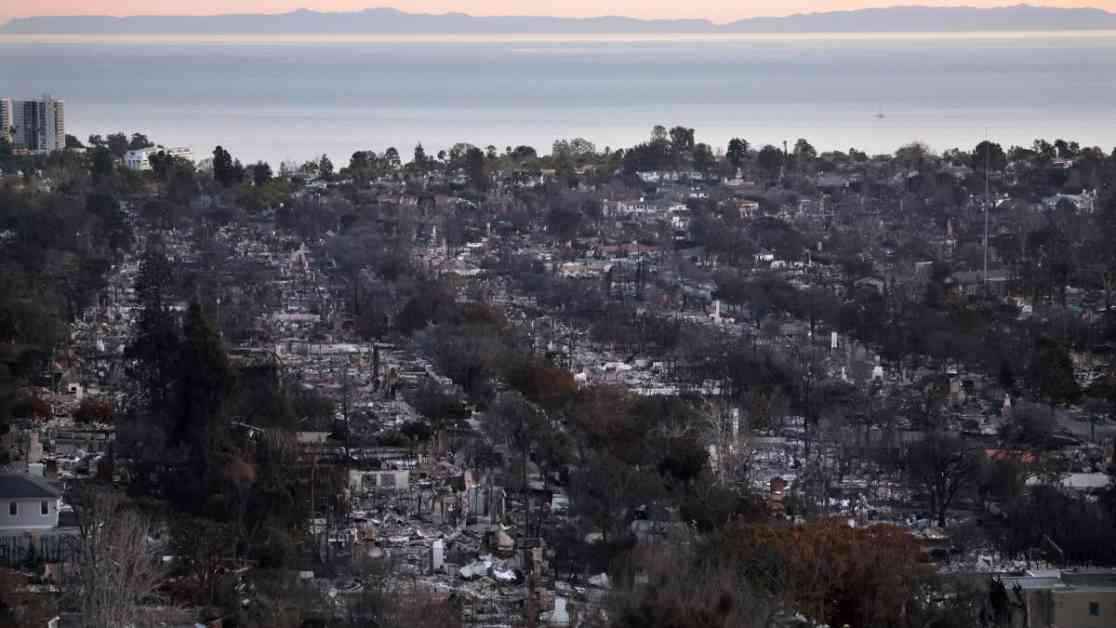The impact of wildfires on real estate in California has been significant, with the Palisades and Eaton fires alone potentially resulting in over $30 billion in losses. This devastation has not only affected property owners but also government agencies that rely on tax revenue, facing potential annual losses of $61 million or more while homes are being rebuilt.
New analysis by The Times has shed light on the extent of the damage caused by the fires, revealing that 56% of all properties in the Pacific Palisades were affected, with nearly half of properties in Altadena destroyed. The fires took a toll on various structures, including commercial buildings, churches, schools, and hospitals, but the greatest impact was felt by homeowners.
Over 13,000 households were displaced by the fires, coming from a range of property types such as single-family homes, condominiums, apartments, duplexes, and mobile homes. The loss of affordable housing units, particularly in rent-controlled properties, poses a challenge to the sustainability of these communities.
In Altadena, renters living in unique clusters of single-family bungalows faced the loss of their homes, with some struggling to rebuild due to financial constraints. The economic impact of the fires was felt across different income brackets, with high-value properties in the Palisades and Altadena being destroyed.
While the estimated losses from the fires amount to billions of dollars, the true cost of the disaster extends beyond property damage. AccuWeather projected the total cost to individuals, institutions, and the Southern California economy, factoring in cleanup, infrastructure repair, temporary housing, and lost business revenue.
For property owners like Christine D., the devastation of losing her home represents a significant financial and emotional blow. Standing amidst the ruins of her property, Christine reflects on the challenges of rebuilding at her age and contemplates leaving the vacant lot to her grandchildren.
Expert estimates from UCLA’s Anderson School of Management and the real estate analytics firm CoStar provide additional perspectives on the extent of the losses, ranging from $30 billion to $164 billion. These figures take into account the value of destroyed properties and the challenges faced by property owners in the aftermath of the fires.
The impact of the fires on tax revenue has also been substantial, with over 10,000 tax-paying parcels destroyed or damaged. Government agencies, including schools and community college districts, face significant annual revenue losses, adding to the financial strain caused by the wildfires.
As property owners and taxing jurisdictions navigate the long road to recovery, the effects of the wildfires will continue to be felt for years to come. The rebuilding process, insurance claims, and tax implications will shape the future of these communities, requiring resilience and support from all stakeholders involved.
The road to recovery from the wildfires will be a challenging and lengthy process, requiring collaboration and support from all levels of government and the community. As property owners and government agencies work to rebuild and recover, the human impact of the fires serves as a reminder of the resilience and strength of those affected by this natural disaster.


